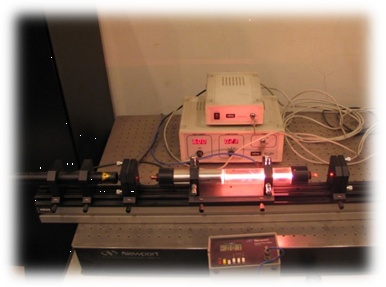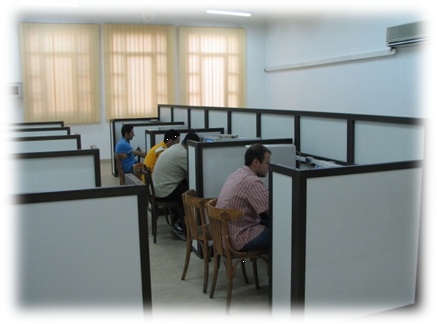Interference Excision Technique in Frequency Hoping Spread Spectrum Communication
Dr. El-Ghoz, H. H.
Dr. Saad, E. M.
Dr. El-Ghoneimi, M. M. R.
Dr. Ragaee, M. F. M.
Dr. El-Ghoz, H. H.
Interference, Excision, Frequency Hoping, Spread spectrum
Communication, Notch filters, LPC
Wireless communication systems may be affected by different types of interfering signals. Intentional
jamming may be a serious threat, especially in military applications. Spread spectrum systems have
a certain inherent immunity against interference but that is not always sufficient. Frequency excision
reception schemes are used to investigate the problem of interference and jamming of Spread
spectrum system. Frequency excision (FE) methods increase the receiver’s capability to correctly
decode the received data There are two main directions for investigating FE in this thesis. The first
one is studying and analyzing the effect of different types of digital notch filters on the bit-error rate.
Pole-Zero placement filter and multiple zero filt ers with real and complex shapes and also with
different orders up to 12th is used. The second direction is to apply a new algorithm of frequency
excision based on the linear prediction coefficient filters. As a result of studying different types of
digital notch filters, we found that the pole-zero placement real filters of 2nd and 3rd order give
better results than the filters that have order ranges from 6th and up to 12th with the same category.
The complex form pole-zero placement filters which has order ranges from 2nd and up to 8th give
better results than the filters of order ranges from 10th up to 12th in both coherent and noncoherent
detection. We also found that the multiple-zeros real filters have satisfying results in case of coherent
detection for up to 8th order, but have unwanted results in all orders for noncoherent detection. For
the multiple-zeros complex filters, we have satisfying result in case of 2nd order only for both
coherent and noncoherent detection. Applying a new algorithm based on the linear prediction
coefficient filters, with two, three and four coefficient, we got various BER (high and low) depending
on the jammer frequency band. But in general the result was not satisfying as a frequency excision
method.




